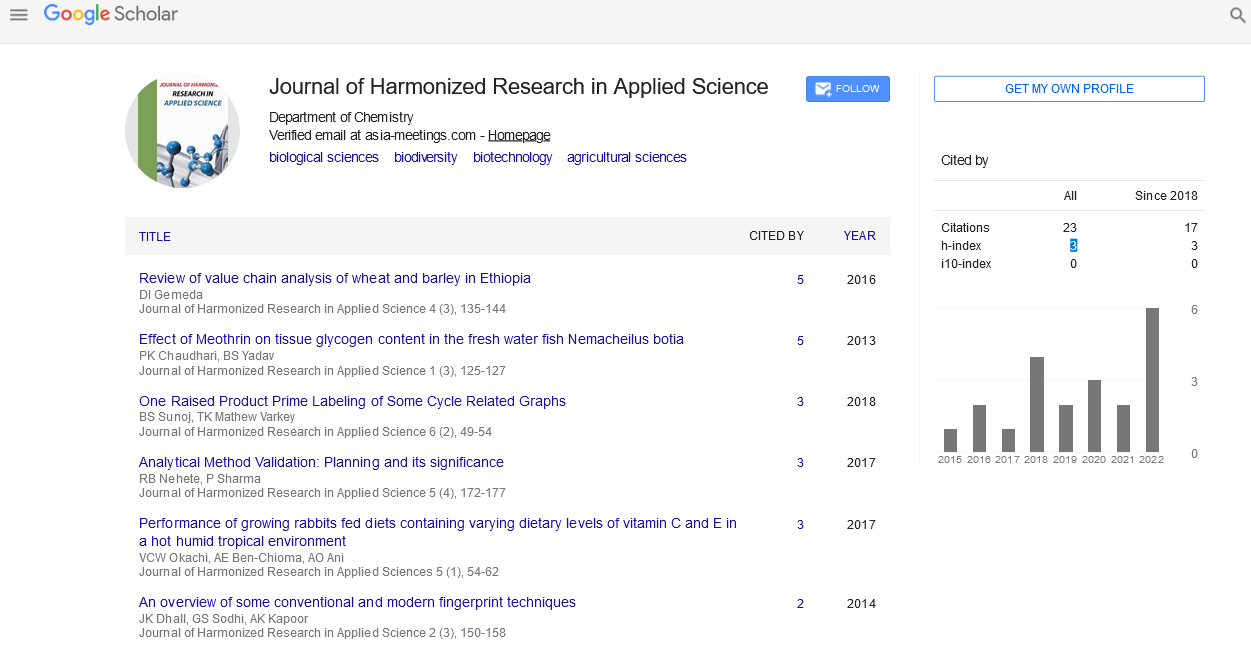Editorial - (2021) Volume 9, Issue 2
BRIEF NOTE ON FERMENTATION TECHNIQUES
Fabiani Zimmerman*Received: Dec 02, 2021
Abstract
https://1xbetx.fun https://bahiscom.fun https://casibomagiris.com https://cratosslot.fun https://grandpashabet.fun https://holiganbet.fun https://holiganbet-giris.info https://jojobet.fun https://jojobetgiris.xyz https://kralbet.fun https://meritking.fun https://vdcasino.fun https://onwin.direct https://cypocafe.com https://sahabetgiris.fun
Description
Fermentation is a metabolic process that uses enzymes to cause chemical changes in organic substrates. It is described as the extraction of energy from carbohydrates in the absence of oxygen in biochemistry. It can also refer to any procedure in which the action of microbes results in a beneficial alteration to a food or beverage in the food industry. Zymology is the scientific study of fermentation. Fermentation is the most common way for bacteria to produce adenosine triphosphate (ATP) through anaerobic breakdown of organic materials. Fermentation has been utilised by humans to make meals and beverages since the Neolithic period. Fermentation, for example, is used to preserve lactic acid, which is found in sour foods like pickled cucumbers and kombucha.
Fermentation, like aerobic respiration, is a way of extracting energy from molecules. This is the only mechanism that all bacteria and eukaryotes use. As a result, it is thought to be the oldest metabolic route, suitable for prehistoric settings before plant life, that is, before the presence of oxygen in the atmosphere. From the skins of fruits to the intestines of insects and mammals to the deep ocean, yeast, a type of fungus, may be found in practically any environment capable of maintaining bacteria. Sugar-rich compounds are converted (broken down) by yeasts into ethanol and carbon dioxide. Basic fermentation pathways can be found in all cells of higher organisms. Fermentation occurs in mammalian muscle during periods of severe exercise when oxygen availability is limited, resulting in the production of lactic acid.
Fermentation also produces succinate and alanine in crustaceans. Fermentative bacteria are involved in the creation of methane in a variety of environments, including bovine rumens, sewage digesters, and freshwater sediments. Hydrogen, carbon dioxide, acetate, and carboxylic acids are all produced. The carbon dioxide and acetate are then converted to methane by microbial colonies. Acetogenic bacteria oxidise acids to produce additional acetate, hydrogen. Methanogens (in the Archea domain) then convert acetate to methane. Alternative protein sources can be made by fermentation. Fermentation, for example, is used to make plant-based protein meals like tempeh. Fermentation can also be utilised to create cultured meat products in vitro using non-living materials. Examples include eggs, honey, cheese, ice cream, and milk. Fermentation can be used to make a variety of food products using proteins, such as yoghurt and milk. Milk substitutes are substances that have been fermented to look like milk. Cheese analogues are substances that mimic cheese, while egg substitutes are substances that resemble eggs.
Meat’s texture, flavour, colour, and scent are all determined by heme, a protein. Impossible Foods employs fermentation to produce soy leghemoglobin, a strand of heme obtained from soybean roots that were employed in the creation of the Impossible Burger to approximate meat flavour and appearance. Microbes have been there from the beginning of time, far before humans. Bacteria and fungi (yeasts and moulds) are so important to our health and evolution that they might be considered a necessary precursor and support for human survival. Even in today’s environment, these bacteria have a significant impact on the foods we eat, how we store food, and the better nutrition that fermented foods provide.
Fermentation is an anaerobic process that occurs in the absence of oxygen and allows some bacteria to flourish. There are a number of ways to start the fermentation process, providing the friendly, acid-loving bacteria a chance to replicate in large enough numbers to give them an advantage over the less friendly microorganisms that may appear. Lactic acid bacteria get their name from the fact that they make lactic acid as a by-product of sugar intake; they require a simple sugar molecule for replication and the release of enzymes into their surrounding environment. Yeasts create alcohol in general, but bacteria can convert that alcohol into acids. Vinegars are created in this manner from wines or ciders.
Ethnic civilizations and microbiological cultures have different fermentation processes. Despite the vast differences in manufacturing processes and final products, fermented foods are all sour, rich in probiotic microorganisms, and offer the body with beneficial enzymes and B vitamins. When the starting material contains sugar, such as fructose in juice used to make wine or vinegar, or lactose in milk used to make yoghurt or kefir, simply adding bacteria to the meal in a low oxygen environment is enough to start fermentation. Sugar is broken down and transformed into acids, which lower the pH of the food and prevent bacteria from growing.










